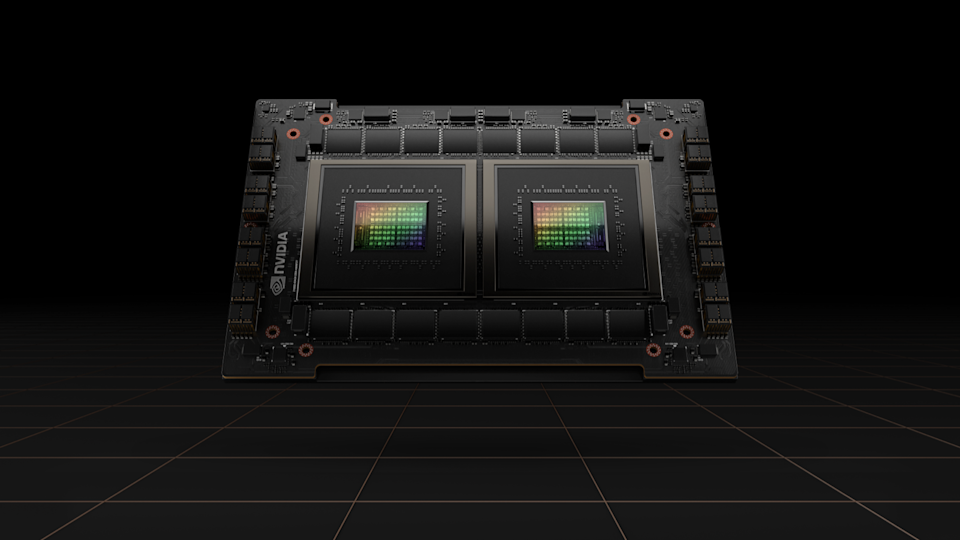Nvidia (NVDA) on Tuesday debuted its first ever discrete CPU for AI infrastructure and high-performance computing called the Grace CPU superchip. Announced at its GTC conference, which runs from March 21 to March 24, Nvidia’s new CPU is made up of two chips paired together.
According to the company, the Arm-based Grace CPU packs 144 cores, which Nvidia says means twice the memory bandwidth and energy efficiency of high-end leading server chips.
The superchip, Nvidia says, is designed for high-performance computing, supercomputing, hyperscale and cloud services customers. That’s likely to unsettle Intel (INTC). While Intel is the market leader in terms of overall sales, it has lost ground to competitors in terms of actual capabilities.
“A new type of data center has emerged — AI factories that process and refine mountains of data to produce intelligence,” Nvidia CEO Jensen Huang said in a statement.
“The Grace CPU Superchip offers the highest performance, memory bandwidth and NVIDIA software platforms in one chip and will shine as the CPU of the world’s AI infrastructure.”
This isn’t Nvidia’s first CPU. Last year, the company announced its Grace CPU for supercomputers, which it expects to launch in 2023. At the time, Nvidia said that chip, which was coupled tightly with an Nvidia GPU, was already destined for supercomputers operated by Los Alamos National Laboratory and the Swiss National Supercomputing Centre.
Nvidia says the new Grace superchip will be available in the first half of 2023.
Nvidia’s further push into high-performance computing CPUs follows its failed acquisition of U.K.-based semiconductor company Arm, which fell apart in February.
The move, which would have cost $40 billion, would have made Nvidia a behemoth in both the CPU and GPU industries. Regulators, including those in the E.U., U.S., and U.K, all took issue with the planned move, due to concerns that it would be anticompetitive.
While Nvidia said it would maintain Arm’s neutrality as a design seller to the broader chip industry, regulators weren’t buying it. Nvidia ultimately abandoned the deal.
That’s not a problem for Nvidia, which will simply continue to license Arm’s technologies. Arm, however, looks like it will return to public markets for the first time since Softbank acquired it in 2016. In anticipation of the move, the company is reportedly preparing to lay off 12% to 15% of its workforce, which could work out to some 1,000 jobs.
Sign up for Yahoo Finance Tech newsletter
More from Dan
Follow Yahoo Finance on Twitter, Facebook, Instagram, Flipboard, LinkedIn, YouTube, and reddit
Got a tip? Email Daniel Howley at [email protected]. Follow him on Twitter at @DanielHowley.













